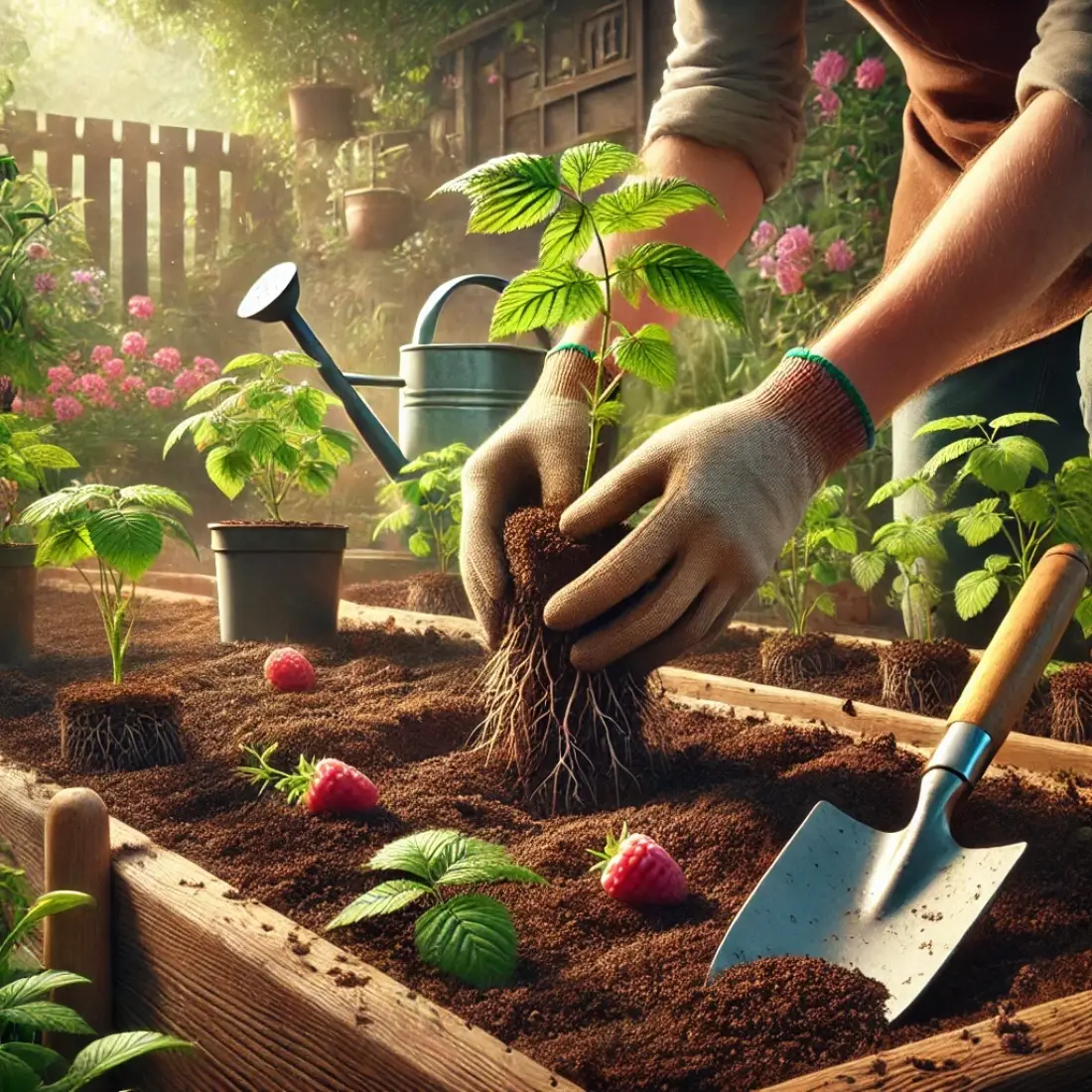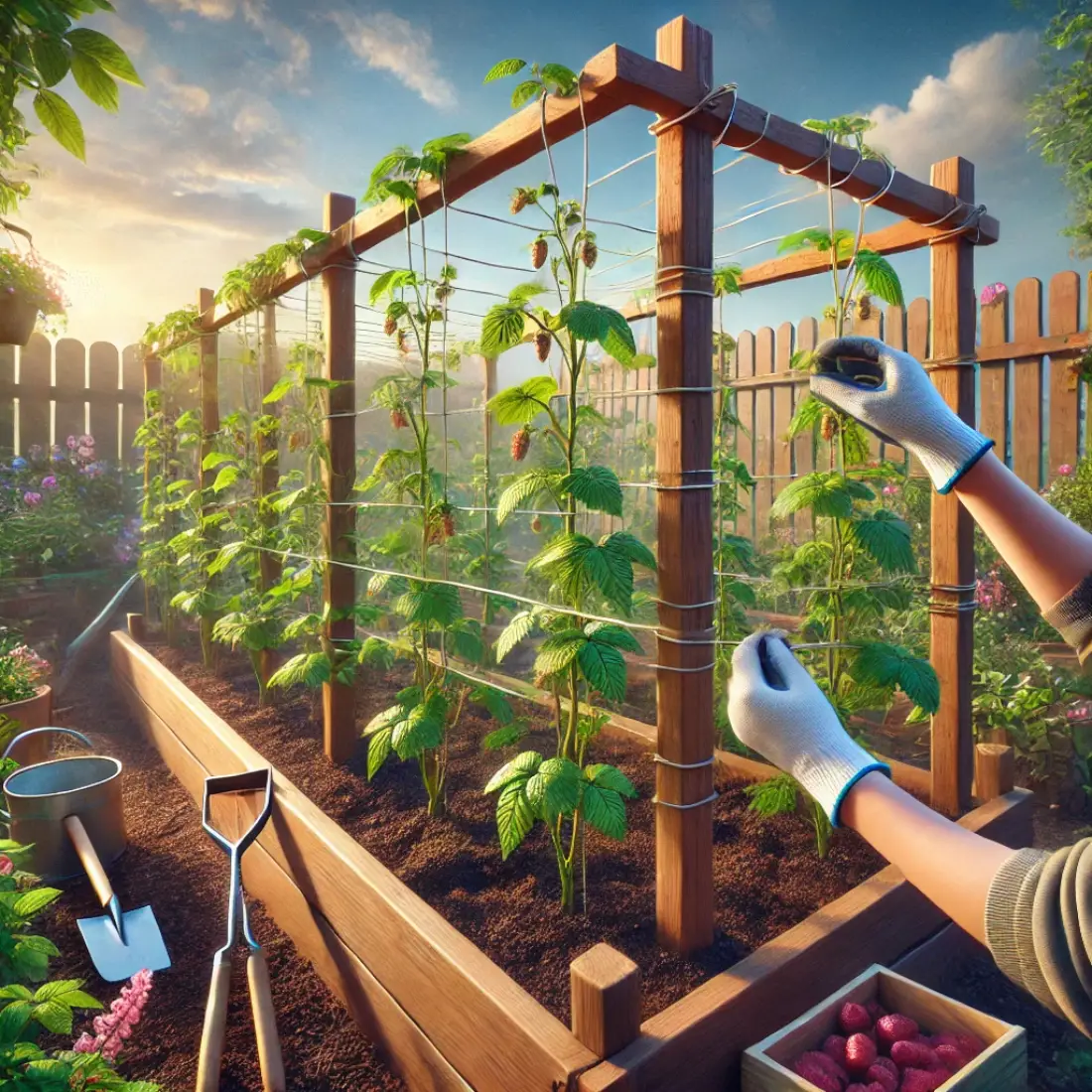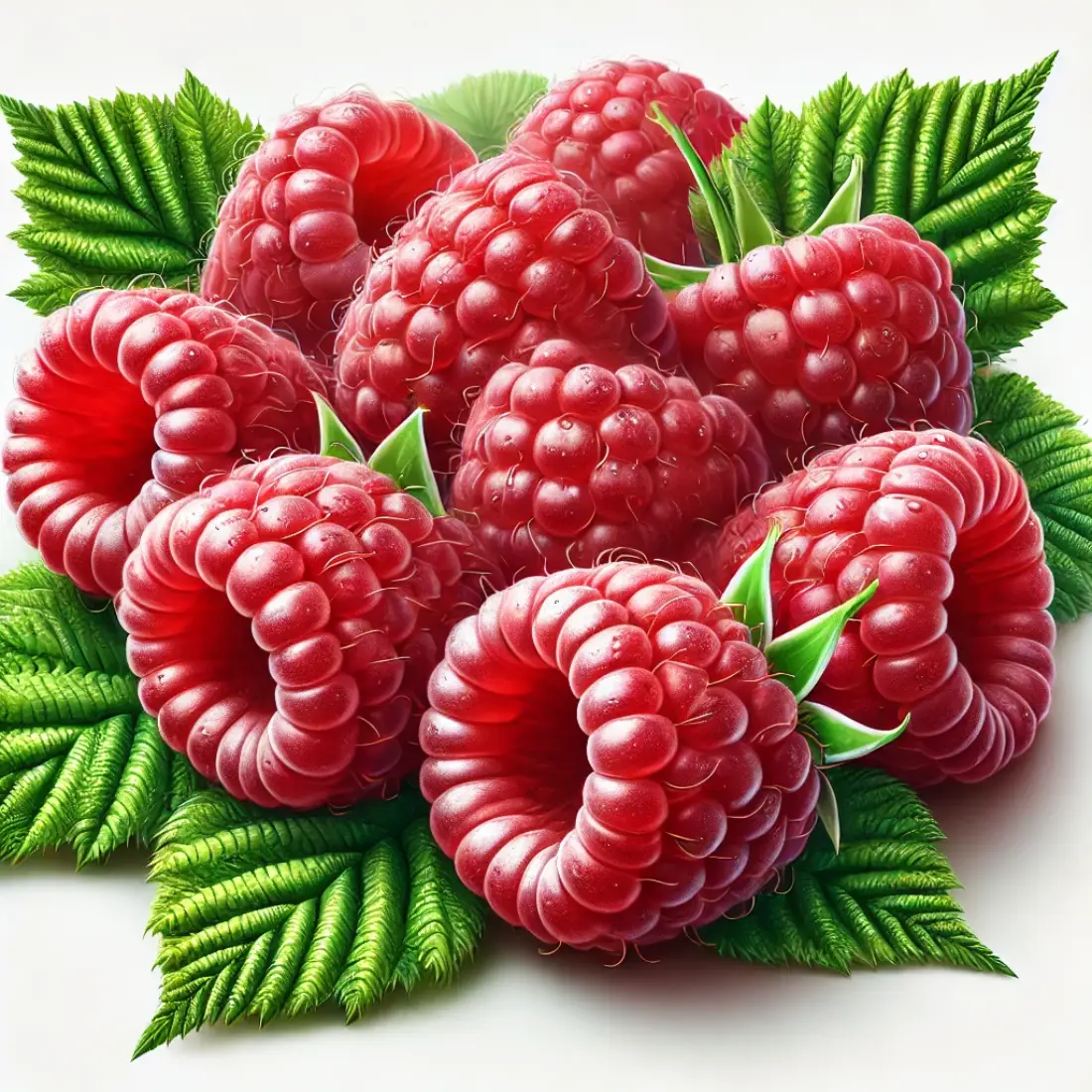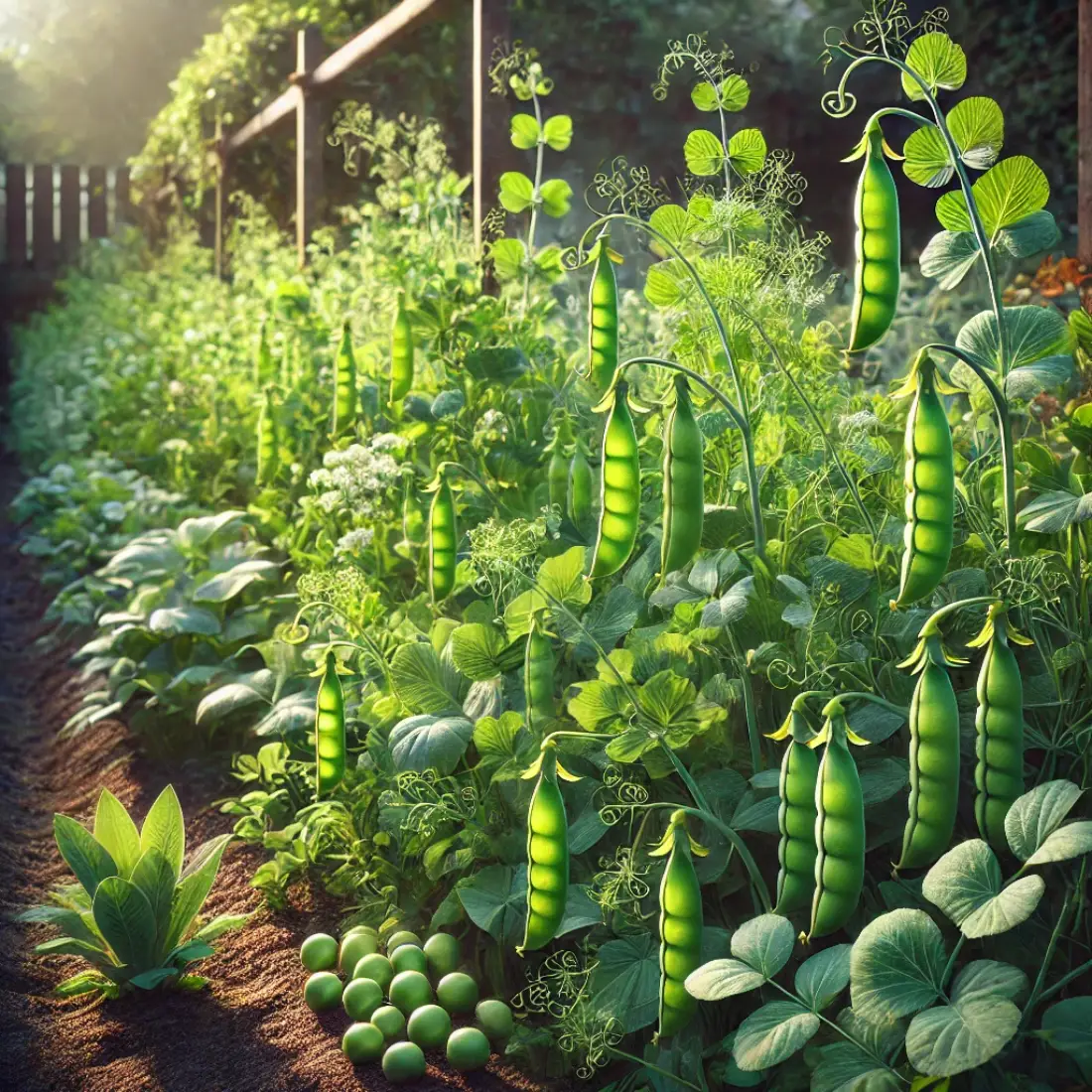Raspberries are popular for their sweet, tangy taste and nutritional benefits, including high levels of vitamins, antioxidants, and fiber. These perennial plants belong to the genus Rubus and come in several varieties, primarily categorized into summer-bearing and ever-bearing types.
Types of Raspberries
When growing raspberries, it’s essential to choose the right type to suit your garden and climate. There are two main types of raspberries: summer-bearing and ever-bearing.
Summer-bearing Raspberries
Characteristics: Summer-bearing raspberries produce one large crop per year, typically in early to mid-summer. They have a two-year growth cycle, with canes that grow vegetatively in the first year and bear fruit in the second year before dying off.

Popular Varieties:
- ‘Boyne’: Known for its hardiness and sweet, medium-sized berries.
- ‘Latham’: Valued for its disease resistance and flavorful red fruit.
Ideal Conditions: These raspberries thrive in well-drained soil with full sun exposure. They are best suited for regions with moderate winters, as the dormant canes need cold temperatures to ensure a good fruit set.
Ever-bearing (Fall-bearing) Raspberries
Characteristics: Ever-bearing raspberries produce two crops per year: a smaller one in early summer and a larger one in fall. They can fruit on first-year canes (primocanes) and second-year canes (floricanes).
Popular Varieties:
- ‘Heritage’: Renowned for its large, firm berries and extended harvest period.
- ‘Autumn Bliss’: Favored for its early fall crop and robust flavor.
Ideal Conditions: Ever-bearing varieties prefer consistent watering and slightly cooler climates. They benefit from rich, well-drained soil and full sun but can tolerate partial shade.
Preparing the Planting Site
- Sunlight and Air Circulation: Raspberries need at least six to eight hours of direct sunlight daily and good air circulation to prevent disease.
- Soil Conditions: They thrive in well-drained, loamy soil with a pH of 5.5 to 6.5. Avoid waterlogged areas to prevent root rot.
- Testing and Amending Soil: Test soil pH and adjust if necessary. Add organic matter like compost or manure to improve soil fertility and drainage.
- Trellising and Staking: Use T-trellises, V-trellises, or stakes to keep canes upright, which improves air circulation, reduces disease risk, and makes harvesting easier.
- Weed Control: Clear weeds and debris before planting. Mulch around plants to suppress weeds and retain moisture.
- Spacing: Space plants 2 to 3 feet apart in rows 6 to 8 feet apart to prevent overcrowding.
Planting Raspberries
Selecting Raspberry Plants
Healthy Plants: Choose healthy, disease-free raspberry plants from a reputable nursery. Look for strong, green canes and a well-developed root system.
Bare-root vs. Potted: Raspberry plants are available as bare-root or potted plants. Bare-root plants are typically cheaper and should be planted while dormant in late winter or early spring. Potted plants can be planted any time during the growing season.
Planting Techniques
Site Preparation: Ensure the planting site is well-prepared with good soil conditions and support structures in place.
Spacing: Plant raspberry canes 2 to 3 feet apart, with rows spaced 6 to 8 feet apart to allow for air circulation and easy access for maintenance and harvesting.
Planting Depth: Dig a hole deep and wide enough to accommodate the roots without bending them. For bare-root plants, place the roots in the hole, spread them out, and cover with soil. The crown should be just above the soil level. For potted plants, ensure the top of the root ball is level with the soil surface.
Initial Watering: Water the newly planted raspberries thoroughly to help settle the soil around the roots. Keep the soil consistently moist but not waterlogged during the establishment period.

Transplanting Tips
Best Time to Transplant: The best time to transplant raspberry plants is during late winter or early spring while the plants are still dormant.
Minimizing Transplant Shock: Water the plants well before digging them up. Carefully dig around the plant to preserve as much of the root system as possible. Replant immediately in the prepared site, water thoroughly, and mulch to retain moisture.
Caring for Raspberry Plants
Watering Requirements
Consistency is Key: Raspberries need regular watering, especially during dry periods. Aim to keep the soil consistently moist, but avoid waterlogging. During the growing season, raspberries typically require about 1 to 1.5 inches of water per week.
Mulching: Applying a thick layer of mulch around the base of the plants helps retain soil moisture, suppress weeds, and regulate soil temperature. Organic mulches like straw, wood chips, or compost are ideal.
Organic Fertilizing Raspberries
Organic fertilizers provide essential nutrients naturally, improving soil health and plant vitality without the risks associated with chemical fertilizers. They enhance soil structure, increase microbial activity, and improve water retention and drainage.
There are several types of organic fertilizers suitable for raspberries:
- Compost: Apply a 2-3 inch layer around plants in early spring to enrich the soil.
- Manure: Use well-rotted manure in the fall to add nutrients for the next growing season.
- Fish Emulsion: This liquid fertilizer is high in nitrogen. Dilute it according to package instructions and apply every 3-4 weeks during the growing season.
- Bone Meal: High in phosphorus, bone meal supports root and fruit development. Apply it in early spring by working it into the soil.
- Blood Meal: Rich in nitrogen, blood meal boosts foliage growth. Use it sparingly to avoid nitrogen burn, applying a small amount in early spring.
For application, spread compost or well-rotted manure around the base of the plants as a top dressing. Mix bone meal or blood meal into the topsoil before planting or in early spring. For liquid fertilizers like fish emulsion, dilute with water and apply directly to the soil.
Follow a simple fertilization schedule:
- Early Spring: Apply compost, well-rotted manure, and bone meal.
- Growing Season: Use fish emulsion every 3-4 weeks to support ongoing growth and fruit production.
- Fall: Add compost or manure to replenish soil nutrients and prepare the plants for winter.
Avoid over-fertilizing, as excessive nutrients can lead to lush foliage with reduced fruit production. Maintain soil pH between 5.5 and 6.5, and use organic mulches like straw or wood chips to retain soil moisture and add organic matter as they decompose.
Pruning Raspberry Plants
Pruning helps maintain plant health, improves air circulation, and increases fruit yield. It also prevents the plants from becoming overcrowded and reduces the risk of disease.
Pruning Summer-bearing Raspberries:
- After fruiting, cut down the canes that bore fruit to ground level.
- Thin the remaining canes to about six to eight per plant, removing weak or damaged ones.
Pruning Ever-bearing Raspberries:
- For two crops per year, prune like summer-bearing varieties, but leave some primocanes (first-year canes) for the fall crop.
- For a single large fall crop, cut all canes to the ground in late winter or early spring before new growth starts.
Pest and Disease Management
Common Pests: Look out for aphids, spider mites, and raspberry beetles. Use insecticidal soap or neem oil for control.
Disease Prevention: Ensure good air circulation, avoid overhead watering, and remove any diseased plant material promptly. Common diseases include powdery mildew, root rot, and raspberry mosaic virus.
General Maintenance
Weed Control: Regularly remove weeds to reduce competition for nutrients and water. Mulching helps in suppressing weed growth.
Training and Tying: As the plants grow, tie the canes to the support structures to keep them upright and ensure they receive ample sunlight.
Trellising and Supporting Raspberry Canes
Trellising is crucial for raspberry plants, helping to keep the canes upright and making harvesting easier.
Types of Support Systems
- Single Wire Trellis: A simple wire stretched between posts about 3-4 feet high.
- T-Trellis: Two wires at different heights, typically 2 and 4 feet, providing better support.
- V-Trellis: Two wires forming a V shape for excellent support and sunlight exposure.

Setting Up the Trellis
- Install Posts: Place sturdy posts at the ends of each row, at least 6 feet tall with 2 feet buried.
- Attach Wires: Stretch wires between the posts. For single wire trellis, place the wire 3-4 feet high; for T-trellis, use wires at 2 and 4 feet.
- Train the Canes: Tie canes loosely to the wires with soft garden ties as they grow.
Maintenance Tips
- Check Tension: Regularly check and tighten the wires.
- Prune: Remove dead or weak canes to maintain a healthy plant structure.
Proper trellising ensures healthy raspberry plants and abundant harvests.
Propagating Raspberry Plants
Propagating raspberry plants allows you to expand your garden without purchasing new plants. Here are effective methods to propagate raspberries.
Methods of Propagation
- Division: Best done in early spring or fall. Dig up the entire raspberry plant and gently separate the root mass into smaller sections, each with roots and canes. Replant these divisions immediately.
- Tip Layering: In late summer, bend a healthy cane to the ground and bury the tip in the soil. By the following spring, the buried tip will develop roots and can be cut from the parent plant and transplanted.
- Cuttings: During late spring or early summer, cut healthy canes into 6-inch sections. Plant these cuttings in moist, well-drained soil. Keep the soil consistently damp until the cuttings develop roots.
Tips for Successful Propagation
- Healthy Plants: Use healthy, disease-free parent plants for propagation.
- Soil Preparation: Ensure the new planting site has well-drained soil with plenty of organic matter.
- Watering: Keep the soil consistently moist, especially during the initial rooting phase.
FAQs About Growing Raspberries
How long does it take for raspberries to produce fruit?
Raspberries typically start producing fruit in their second year after planting. Summer-bearing varieties fruit once a year, while everbearing types produce two crops per year.
What is the best time of year to plant raspberries?
The best time to plant raspberries is in early spring or late fall. Planting during these times allows the plants to establish roots before the growing season or winter dormancy.
How much water do raspberry plants need?
Raspberry plants need about 1-2 inches of water per week. Consistent moisture is crucial, especially during fruit development. Avoid overwatering to prevent root rot.
Can raspberries grow in containers?
Yes, raspberries can grow in containers. Use large pots with good drainage, and choose dwarf or compact varieties. Ensure the plants receive ample sunlight and regular watering.
How do I prevent birds from eating my raspberries?
To prevent birds from eating your raspberries, use bird netting or mesh to cover the plants. Scare devices like reflective tape or garden owls can also be effective deterrents.
What type of soil is best for raspberry plants?
Raspberries thrive in well-drained, loamy soil with a pH between 5.5 and 6.5. Enrich the soil with organic matter, such as compost, to improve fertility and drainage.
How do I prune raspberry plants?
Prune summer-bearing varieties after fruiting by removing old canes. For everbearing types, cut back all canes to the ground in late winter or early spring. Regular pruning promotes healthy growth and better yields.
What pests commonly affect raspberry plants?
Common pests include aphids, spider mites, and Japanese beetles. Regularly inspect plants and use organic insecticidal soap or neem oil to manage infestations.
How do I deal with common raspberry diseases?
Common diseases include root rot, cane blight, and powdery mildew. Ensure good air circulation, avoid overhead watering, and remove and destroy affected plant parts to control diseases.
Can I propagate raspberries from cuttings?
Yes, raspberries can be propagated from cuttings. Take 6-inch sections of healthy canes in late spring or early summer, plant them in moist soil, and keep the soil consistently damp until roots develop.










